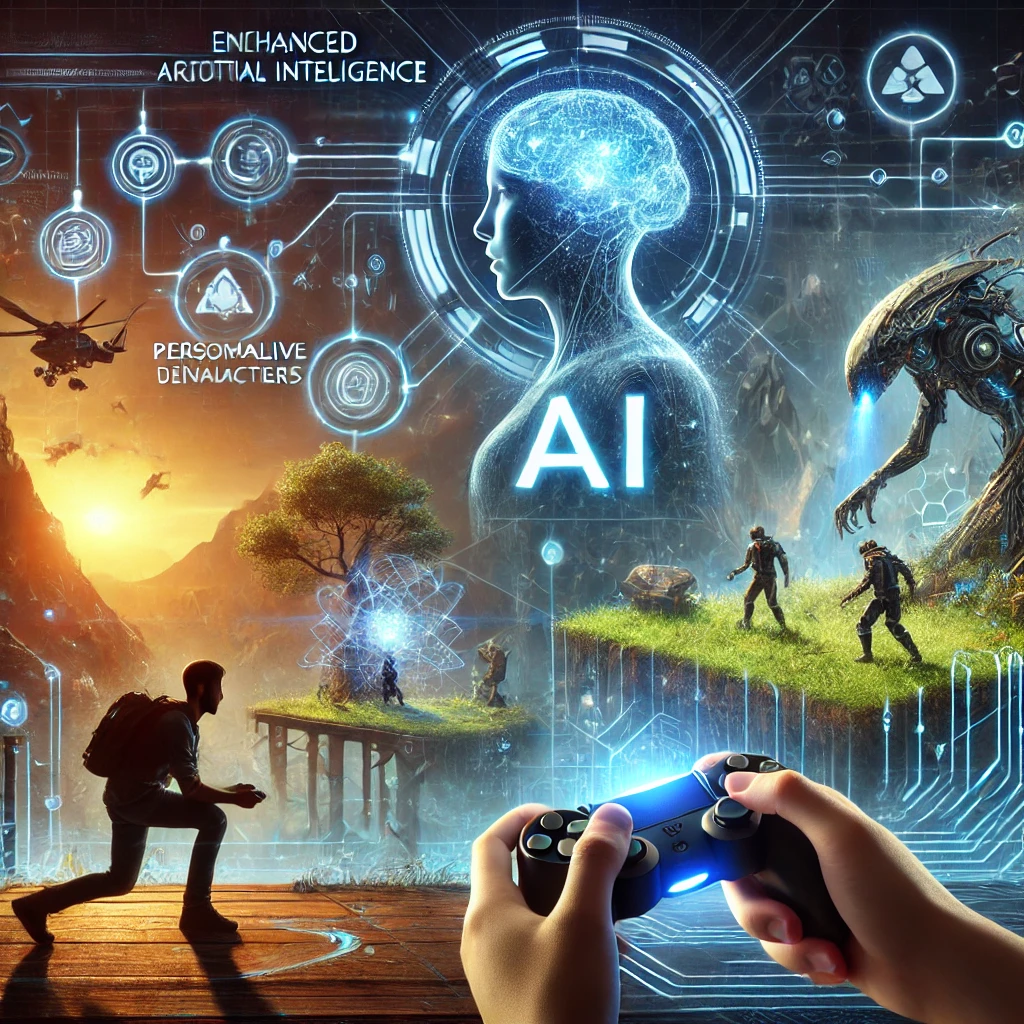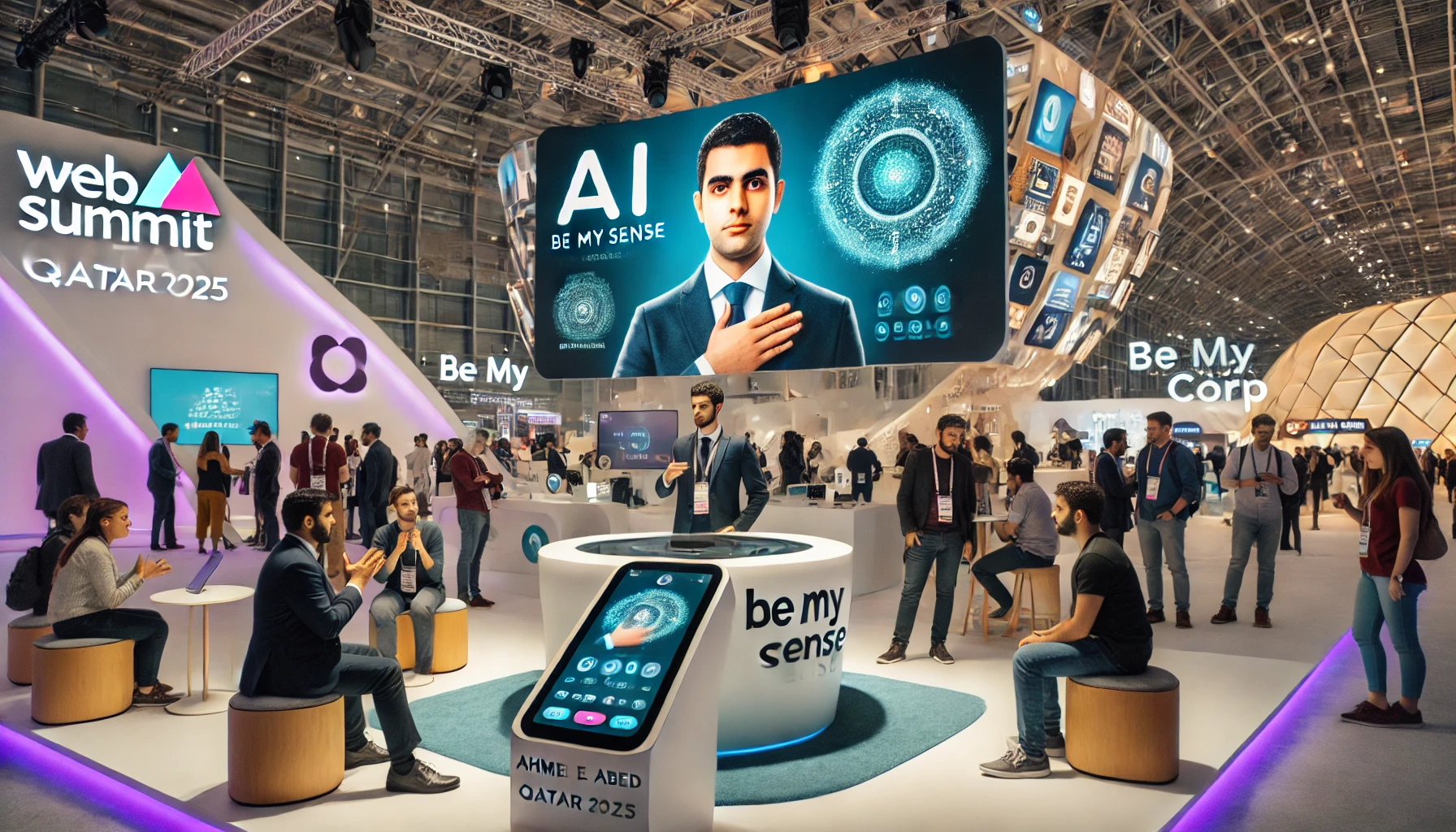Artificial intelligence (AI) is transforming the gaming industry, reshaping everything from how games are developed to how they are played. As AI technologies advance, they are opening up new possibilities for game design, enhancing player experiences, and even revolutionizing how games are marketed and distributed. Here’s how AI is shaping the future of gaming in exciting and innovative ways.
1. Smarter, More Realistic NPCs
One of the most noticeable impacts of AI in gaming is the creation of smarter and more realistic non-player characters (NPCs). Traditionally, NPCs have relied on scripted behaviors that can feel predictable or repetitive. However, AI enables NPCs to learn and adapt in real-time, responding more dynamically to a player’s actions. This results in more engaging and challenging gameplay, where NPCs can strategize, adapt their tactics, and interact with players in more natural and unpredictable ways.
For example, AI-driven NPCs in games like Red Dead Redemption 2 or The Last of Us Part II demonstrate complex behaviors and decision-making processes, creating richer, more immersive environments that feel alive and responsive to players’ choices.
2. Procedural Content Generation
AI is also revolutionizing the way game content is created through procedural generation. This technique uses algorithms and AI to generate vast and varied game worlds, levels, and missions without requiring developers to manually design each element. This not only reduces the time and cost associated with game development but also allows for endless replayability and unique experiences for each player.
Games like Minecraft and No Man’s Sky utilize procedural generation to create expansive, ever-changing landscapes, ensuring that no two gaming experiences are the same. As AI becomes more sophisticated, developers can create even more intricate and diverse game worlds that adapt to a player’s style and choices.
3. Personalized Gaming Experiences
AI is enabling a new level of personalization in gaming. By analyzing player behavior and preferences, AI algorithms can customize the gaming experience to suit individual players. This might include adjusting difficulty levels, suggesting new in-game content, or tailoring storylines based on player choices.
For example, AI can monitor how a player interacts with the game—whether they prefer exploration over combat or puzzle-solving over action—and adapt the game accordingly. This level of personalization ensures that each player’s experience is unique and tailored to their preferences, enhancing engagement and satisfaction.
4. Enhanced Graphics and Realism
AI is playing a crucial role in enhancing the visual quality of games. AI-powered tools like Nvidia’s DLSS (Deep Learning Super Sampling) use machine learning algorithms to upscale lower-resolution images in real-time, delivering smoother graphics and better performance without sacrificing visual fidelity. This allows games to achieve high levels of realism and detail, even on less powerful hardware.
AI is also being used to create more lifelike animations and physics. For example, AI can simulate more realistic movements, facial expressions, and environmental effects, making the game world feel more authentic and immersive.
5. Improving Game Testing and Development
AI is significantly streamlining the game development process by automating testing and quality assurance (QA). Traditional game testing requires human testers to spend countless hours identifying bugs and errors. AI can simulate thousands of gameplay scenarios rapidly, detecting issues that human testers might miss and providing valuable data to developers.
This AI-driven approach to QA helps speed up the development cycle, reduces costs, and ensures a more polished final product. It also allows developers to focus more on creativity and innovation, knowing that routine testing tasks are efficiently handled by AI.
6. Revolutionizing Game Marketing and Distribution
AI is not only changing how games are made and played but also how they are marketed and distributed. AI-driven analytics help game companies better understand their audiences, predict trends, and optimize marketing strategies. By analyzing player data, AI can identify which aspects of a game resonate most with different demographics, allowing for more targeted advertising campaigns.
Additionally, AI-powered recommendation systems, such as those used on platforms like Steam or the PlayStation Store, suggest games to players based on their past behaviors, increasing the chances of discovery and engagement with new titles.
7. Creating New Game Genres and Experiences
AI is fostering the creation of entirely new game genres and experiences. For instance, AI-driven narrative games can generate storylines dynamically, offering players a new experience every time they play. AI is also being used in virtual reality (VR) and augmented reality (AR) games to create more interactive and immersive environments.
As AI continues to evolve, we can expect even more innovative game types that blend genres, blur the line between player and AI interactions, and offer previously unimaginable experiences.
The Future of AI in Gaming
The integration of AI into gaming is just beginning. As technology advances, AI will continue to shape the gaming landscape, providing richer, more engaging, and personalized experiences for players. From smarter NPCs and procedural content generation to enhanced graphics and AI-driven marketing, the possibilities are vast and exciting.
Ultimately, AI is not just a tool for developers; it is a game-changer that will define the future of interactive entertainment, creating games that are more adaptive, immersive, and enjoyable for players around the world.





